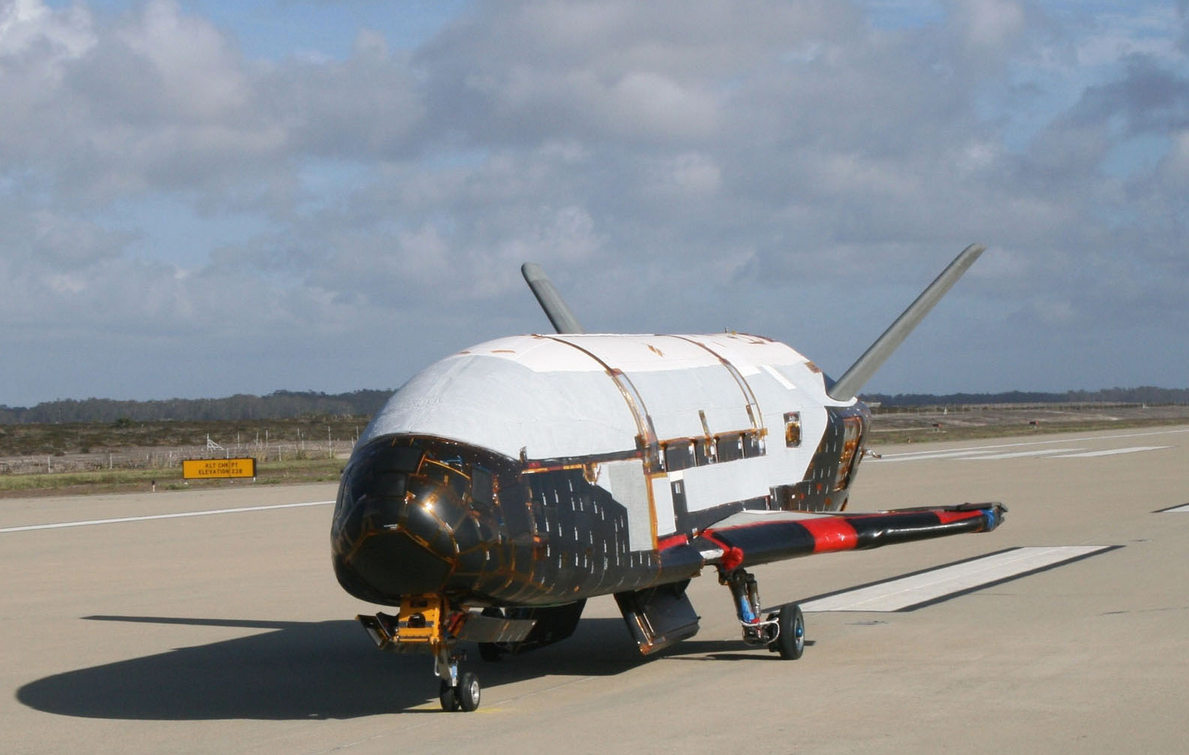 By Brian Santo, contributing writer
By Brian Santo, contributing writer
The problem with keeping orbital objects secret is that they’re visible to literally everyone on the planet under the orbital path who thinks to look for them, but otherwise the Department of Defense is doing a fine job sustaining mystery around its X-37B spacecraft.
On May 7, the X-37B completed its fourth mission, during which it had been in orbit for two years.
The X-37B is an Orbital Test Vehicle (OTV), an unmanned vehicle designed by Boeing to be reusable. As such, it shares some of the design specifications as the Space Shuttle. The shape and aerodynamic profile of the new craft is similar, and it is likewise attached to a rocket for launch. Unlike the Space Shuttle, the X-37B is an unmanned vehicle. Originally ordered up by NASA in 1999, the program was transferred to the DoD in 2004.
It is managed by the Air Force Rapid Capabilities Office (AFRCO), which is responsible for ushering combat support and weapon systems to readiness. The government has been stingy with details, but before the launch of the fourth mission, the Office said thatit would be testing technologies including “advanced guidance, navigation and control, thermal protection systems, avionics, high-temperature structures and seals, conformal reusable insulation, lightweight electromechanical flight systems, advanced propulsion systems and autonomous orbital flight, reentry, and landing.”
It’s rare for the DoD to orbit anything that doesn’t include reconnaissance technology. A few years back, The Daily Beast found sources who acknowledged that the craft carries “various high-tech cameras of various types, electronic sensors, and ground-mapping radars.” If accurate, such technology would probably be used in future satellites.
The New York Times , meanwhile, elicited assurances from the Pentagon that the orbiter carries no offensive capabilities; rather, its ultimate goal would be to aid terrestrial fighters with ancillary technologies.
The secrecy, of course, has led to some science-fictiony speculation, much of which has been dismissed as unlikely or impractical, given what’s known about the X-37B. The craft is impractical for carrying bombs to drop from orbit, nor is it suited for grabbing potential antagonists’ satellites (both are notions considered by the Pentagon).
Some intriguing conjecture, originally from the International Business Times , is that the U.S. is using the X-37B to test an EmDrive , an engine that — despite everything known about physics — apparently really can create thrust without any fuel. A subsequent report from Aviation Week says that the U.S. lost interest in the EmDrive but notes that if the Chinese remain enthusiastic about the technology, the U.S. would have to take a second look.
The next launch of an X-37B is scheduled for later this year. There are plans for a manned version, designated the X-37C.
Advertisement
Learn more about Electronic Products Magazine





